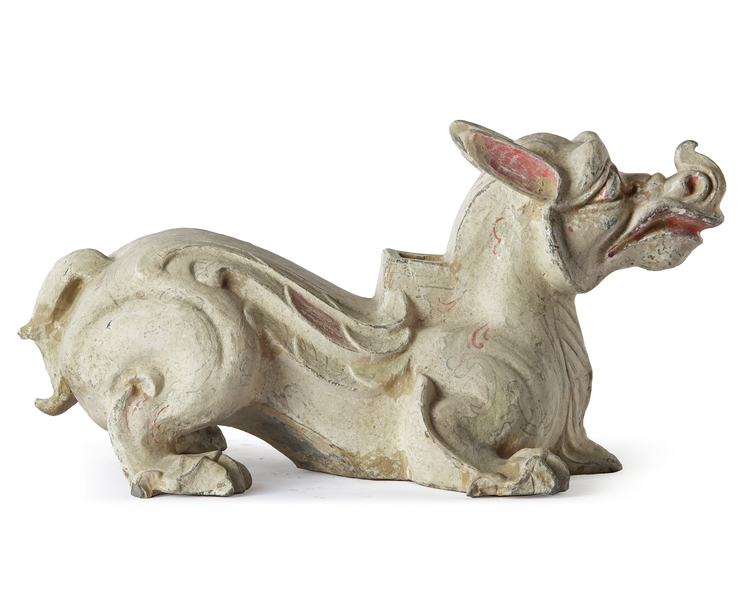A CHINESE PAINTED POTTERY MYTHICAL BEAST, EASTERN HAN DYNASTY (25-220 AD)
The pottery figure is crisply modelled as a crouching and winged mythical beast. The animal is formed by the artist as about to leap forward with its leonine body possessing a layered tail, ridged back arched above the swirling hanches and applied behind the neck with a rectangular aperture. His sides are painted with feather markings and further scrolling. The long and upturned snout is pulled to an agressive snarl with bulging eyes and pricked ears. The mythical beast is painted with crimson, black and red details which stand out against the overall cream pigment covering most of the grey pottery ground. This kind of creature has a head resembling a tapir whilst having the pawns of a lion. In early literature these mythological animals were called chimaras. Mythical beasts of this kind were frequently placed in Eastern Han tombs in the area of modern Sichuan province and according to some scholars served as guardians. Normally they are presented as a pair. Further research has suggested that these pottery figures were used to secure screens, baldachins or canopies, their considerable width ensuring stable support for this type of furniture. Also the rectangular aperture behind the head seems to indicate that a function as a support is not to be excluded. The original meaning of the chimara however, was one of protecting. Most probably the original function of guarding has changed, in due course, into a more functional meaning. Length 42 cm.
PROVENANCE Private collection,The Netherlands




